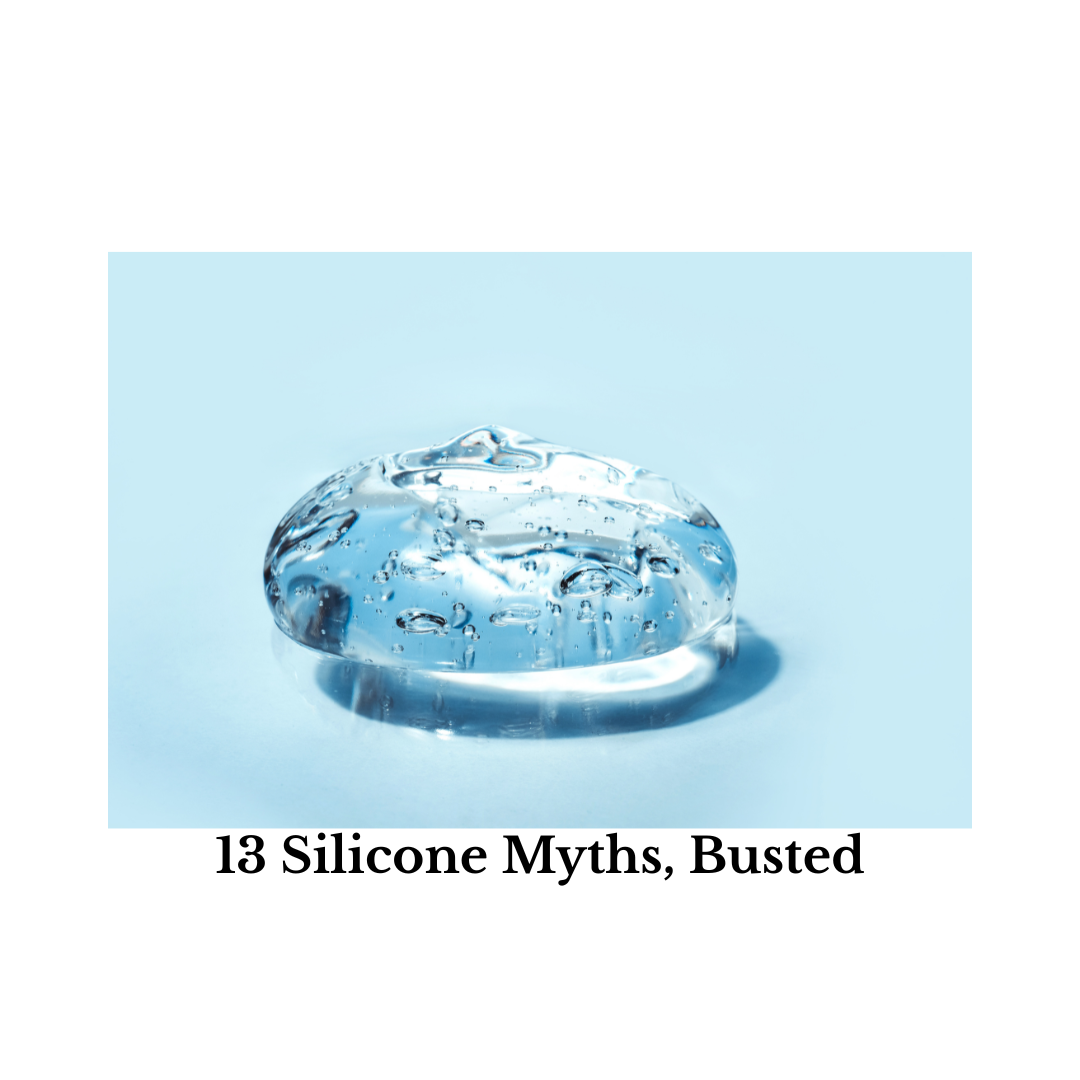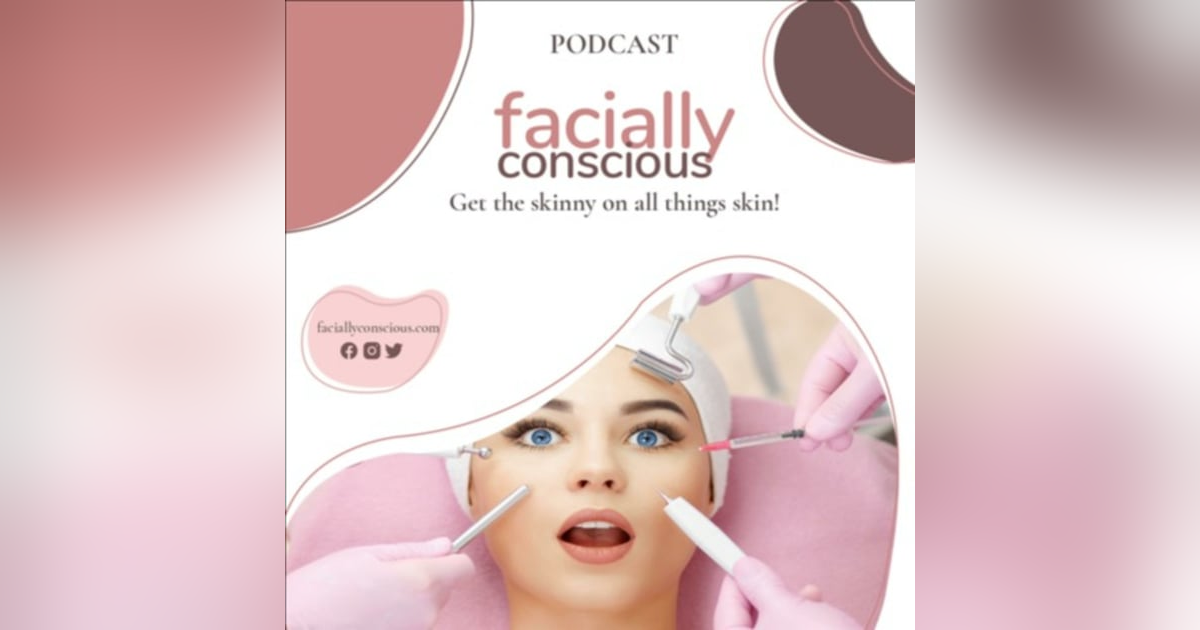13 Silicone Myths Busted: The Science Behind Skincare's Most Misunderstood Ingredients

Originally discussed on the Facially Conscious Podcast episode "13 Silicone Myths, Busted"
If you've ever wondered why your favorite serum glides on smoothly or why that sunscreen applies so evenly without streaks, chances are you have silicones to thank. Despite their widespread use in nearly half of all cosmetic products, silicones remain one of the most misunderstood ingredient families in skincare. In a recent episode of the Facially Conscious Podcast, cosmetic chemist Rebecca Gadberry and esthetician Trina Renea addressed 13 common myths about silicones, revealing the science behind these impressive ingredients.
What Are Silicones, Exactly?
Before diving into the myths, it's important to understand what silicones are. As Rebecca explains, "Silicones are what we call polymers. And what is a polymer? It is 'poly', which means many, and 'mer' means unit. It's many repeating units of the same basic molecule. So they're larger molecules."
These polymers come from silicon—the second most common element on Earth—and oxygen, another plentiful element. This makes silicones highly sustainable in terms of raw materials. However, it's important to remember that silicones do not occur naturally; they are created in laboratories, classifying them as entirely man-made ingredients.
Myth #1: Silicones Are Inexpensive Fillers That Don't Help Skin
The truth: Silicones are neither inexpensive nor just fillers. In reality, they play several essential roles in skincare formulas. Rebecca mentions that thin silicones help ensure even application of potentially irritating ingredients like alpha-hydroxy acids, salicylic acid, or retinol. "Silicones can lower the irritation potential of a product by making sure that the ingredient that would cause the irritation is spread evenly over the skin," she explains.
In sunscreens, silicones ensure even coverage, preventing "pockets of protection and pockets of not being protected" that could lead to burns. They also provide lubrication during application and can offer waterproofing properties.
Myth #2: Silicones Are Similar to Microplastics
The Truth: This comparison is scientifically incorrect. As Rebecca explains, "Plastic is actually organic. Silicones are not organic, meaning that there's no carbon in them. Plastics are carbon-based, but silicones are not. They're silicon-based, so they are not plastic and they don't degrade into microplastics."
Myth #3: Silicones Cannot Be Removed from Skin
The Truth: Silicones are easily removed with standard cleansing methods. While they are water-resistant, most skincare products contain silicones at concentrations between 1-5% (with the highest being 20-25%), making them simple to cleanse away. "You can just use a simple facial cleanser to remove them. Micellar water can also remove them," Rebecca states. Interestingly, oil cleansing isn't effective for silicone removal since silicones aren't oil-soluble.
Myth #4: Silicones Clog Pores and Lead to Breakouts
The truth: Silicones can't clog pores because they don't oxidize. For an ingredient to be comedogenic (pore-clogging), it must penetrate the pore and react with oxygen through oxidation. Since silicones don't go through this process, they can't cause breakouts by clogging pores.
Myth #5: Silicones Are Toxic and Lead to Serious Health Problems
The truth: Silicones are very safe. Because they are polymers (large molecules), they are too big to pass through the skin barrier. This means they cannot cause sensitivities, allergies, or health problems when used on the skin. Rebecca emphasizes that "they are inert, so they don't react with your biology."
The confusion might come from issues with certain silicone breast implants from decades ago, but applying silicone topically is a completely different situation. As Gadberry points out, "things that are applied to the skin, once they penetrate, frequently, the ingredient becomes a different molecule. Silicones don't even penetrate so they can't become a different molecule."
Myth #6: Silicones Aren't Biodegradable, Which Makes Them Harmful to the Environment
The truth is: While silicones aren't biodegradable because microorganisms can't digest them, they are degradable through other means. "They are degradable by sunlight and water," Rebecca explains. "Some of these silicones degrade within one day to maybe three years, depending on the environment they're in."
The main difference is that our environmental testing procedures have traditionally focused on biodegradability, resulting in incomplete evaluations of silicone's environmental impact.
Myth #7: Silicones Suffocate the Skin
The Truth: Silicones are breathable. Rebecca shares a fascinating historical anecdote: "Some scientists working with the silicone film back in the 1940s, took a canary, put it in a cage, wrapped the cage up with the silicone film, and immersed the canary for like 10 hours or something. When they brought the canary back out, it was singing because the oxygen could penetrate the silicone film."
Myth #8: Silicones Hold Dirt and Pollutants on Skin
The Truth: Instead of trapping contaminants, silicones actually shield against them. The FDA recognizes some silicones, like dimethicone, as skin protectants. "It actually keeps it from being affected by dirt, makeup, smog particles, and irritants because it acts as a skin protectant," Rebecca explains.
The Advantages of Silicones in Modern Skincare
Beyond debunking myths, it's important to understand why silicones have become so common in skincare. Before silicones, "products were very clumpy. They didn't apply smoothly," Rebecca recalls. Modern formulations with silicones offer that luxurious, smooth application we now expect.
Silicones also enable formulators to create products that require less product per application, do not clump, and leave the skin feeling exceptionally soft. When brands remove silicones, they often replace them with esters—another chemical class that, unlike silicones, can actually clog pores.
Identifying Silicones in Your Products
To identify silicones on ingredient lists, look for:
- Words ending in "-cone" (like dimethicone)
- Words beginning or containing "sil" (like siloxane)
- Words ending in "-conol" (like dimethiconol)
The Bottom Line
As regulatory agencies worldwide—including Health Canada, the European Union Scientific Committee on Consumer Safety, the UK Environmental Agency, and the US Cosmetic Ingredient Review board—have concluded, silicones are safe and effective ingredients. The persistent myths surrounding them often come from marketing tactics aimed at selling "silicone-free" alternatives rather than scientific evidence.
For skincare professionals and consumers alike, understanding the science behind silicones can lead to better product choices and more informed discussions about skincare ingredients. As Rebecca concludes, "There's nothing wrong with silicones. They are absolutely safe."
The next time you experience that perfect, silky application from your favorite skincare product, you'll know exactly what to thank—and why there's no need to fear these remarkable ingredients.
For more evidence-based skincare insights, listen to the full "13 Silicone Myths, Busted" episode on the Facially Conscious Podcast.
To read more from Trina Reneá, join her on Substack.








